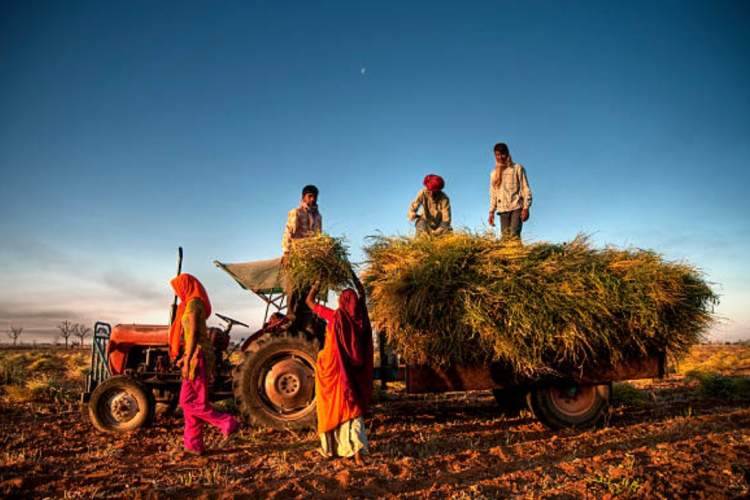India’s agriculture sector has become collateral damage in Donald Trump’s tariff war. Determined to shield agriculture from a flood of cheap imports, New Delhi resisted US demands to open its market. The response from Washington has been swift: a punitive 50 per cent tariff on Indian farm exports. What follows will shape the future of a sector already battling domestic stress and global headwinds.
The global farm trade regime is skewed. Developed countries subsidise their farmers lavishly while pressing developing nations to open markets. The United States and the European Union spend tens of billions annually to protect their producers. India’s small farmers, by contrast, operate with little state support, often at subsistence levels. For them, unrestricted import access could depress already fragile incomes.
READ | Trump tariffs playbook: McKinley’s ghost in a globalised world
The consequences are not abstract. India has struggled with high levels of farm distress, visible in the thousands of suicides reported each year. Allowing subsidised imports into such a vulnerable market would only deepen the crisis.
A sector of paradoxes
Agriculture remains India’s largest employer, sustaining 42 per cent of the population and engaging 46 per cent of the workforce. Yet, it contributes less than one-fifth of GDP. The mismatch is reflected in household earnings. The average farm household earns just ₹13,661 a month, of which only a third comes from farming. The rest is cobbled together from odd jobs, casual labour, or petty trade.
The structural handicap is clear: the average farm size in India is 0.74 hectares, down from 2.28 hectares in 1971. This is minuscule compared to the US average of 46 hectares. Small holdings prevent mechanisation and modern irrigation, driving up per-unit costs. Meanwhile, input costs for diesel, fertilisers, and seeds have risen faster than crop prices, squeezing margins further.
Why India cannot match US farm support
The comparison with America is stark. According to WTO data, the US spends over $48 billion annually on farm support. Its farmers benefit from crop insurance that subsidises up to 60 per cent of premiums, guaranteed prices, and marketing loans that secure above-market earnings.
Indian farmers, by contrast, face delayed or inadequate compensation under the Pradhan Mantri Fasal Bima Yojana. Even the Minimum Support Price (MSP) regime remains a political flashpoint, with farmers demanding statutory guarantees while protesting on highways. The fiscal reality is that India cannot match American levels of direct support.
Shifting labour out of agriculture
The deeper problem is that too many Indians remain trapped in low-yield farming because there are insufficient jobs in industry and services. China’s rapid growth came from moving millions out of farming into factories and services. India has lagged on this front.
The policy prescription is clear: accelerate the creation of labour-intensive jobs in textiles, food processing, light engineering, and allied sectors. A coherent industrial policy that incentivises such employment can ease the demographic burden on farming.
Land fragmentation and modernisation
Another chronic issue is land fragmentation. What was once held in larger family holdings has been split into ever-smaller parcels, making precision agriculture or efficient irrigation unviable. A tractor or harvester is often uneconomical on a one-acre plot. The solution lies in encouraging voluntary land pooling, which allows joint cultivation while retaining ownership titles. This could pave the way for mechanisation and shared infrastructure.
At the same time, India must focus on value addition. Farm exports touched $48.15 billion in 2023–24, but remain constrained by poor logistics, weak branding, and lack of quality certification. A concerted push on these fronts could unlock far greater potential.
Climate change: The silent threat
The farm sector faces an additional, growing risk from climate change. India’s average temperature has risen by 0.7°C since 1951, while rainfall has declined by about 6 per cent. Extreme weather events—heatwaves, erratic monsoons, floods—are undermining farm output.
Developing climate-resilient crops and farming systems will require a substantial increase in agricultural research spending. Currently, India invests less than 0.5 per cent of agri-GDP in R&D. This needs to be doubled at the very least.
From production to food systems
Agriculture policy must shift from a narrow focus on production to a holistic food system—spanning cultivation, marketing, processing, and consumption. The objective should be twin: ensuring nutritional security for a growing population while providing stable incomes for farmers.
Trump’s tariffs are not the end of the road. They are a reminder that India must protect its farmers in the short run while embarking on long-delayed reforms. Protective tariffs can shield vulnerable producers for now, but the medium-term priority is structural reform—labour transition, land consolidation, value addition, and climate resilience.
The forthcoming budgets and policy shifts should build the foundation for a modern, competitive farm economy. The next tariff war should not find India on the defensive but prepared and confident.

